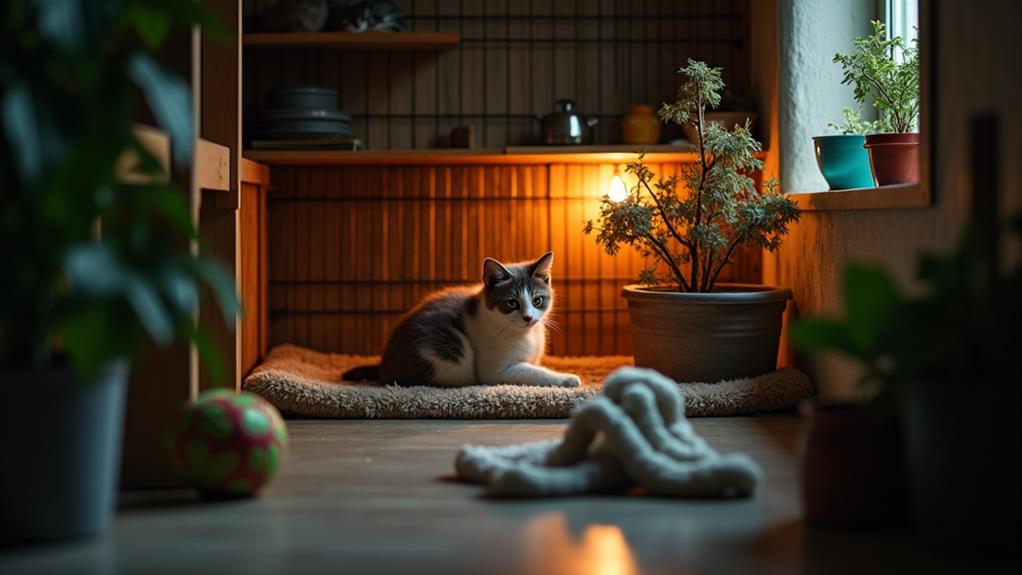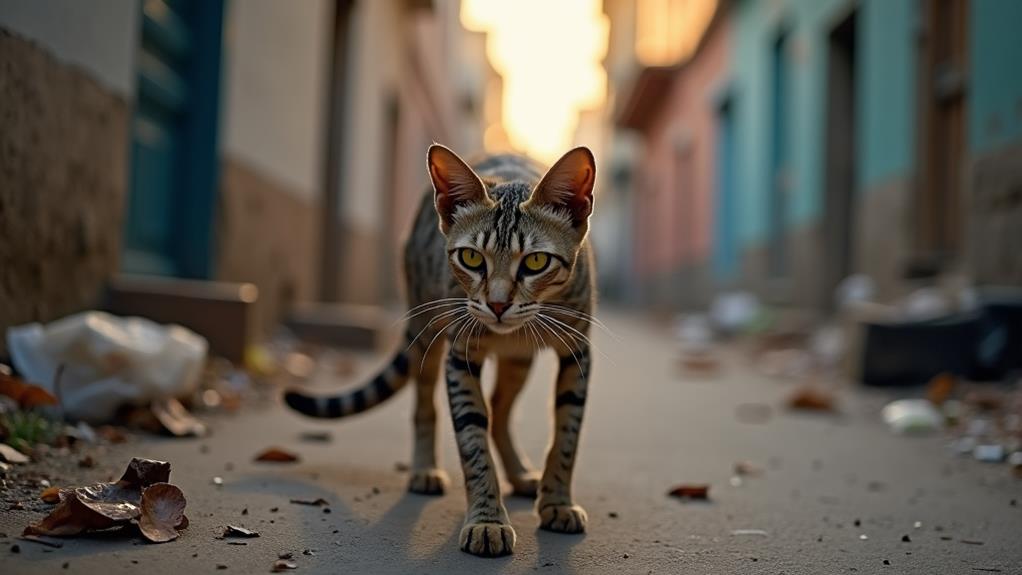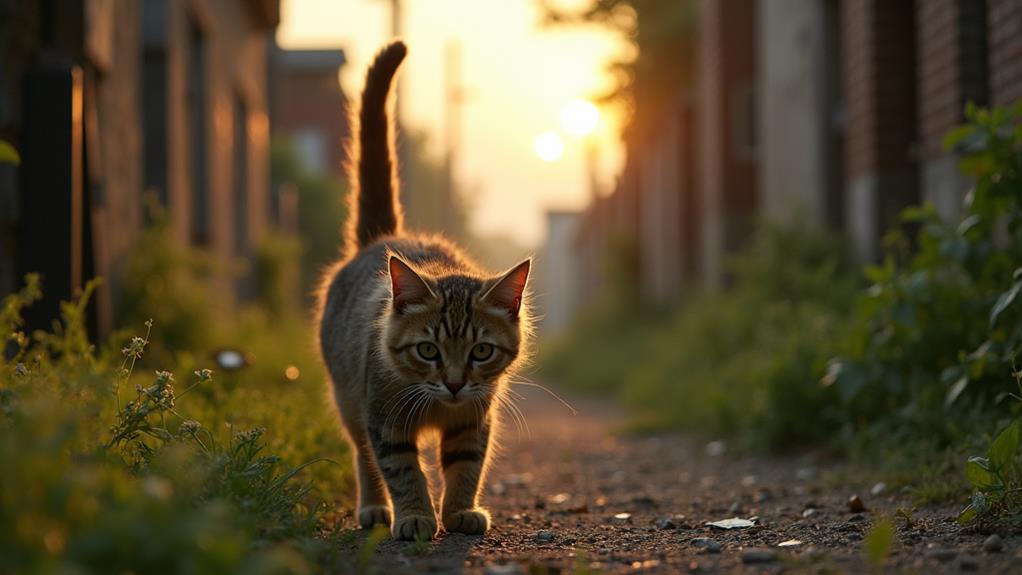How Much Should You Feed a Feral Cat? Feeding Guidelines
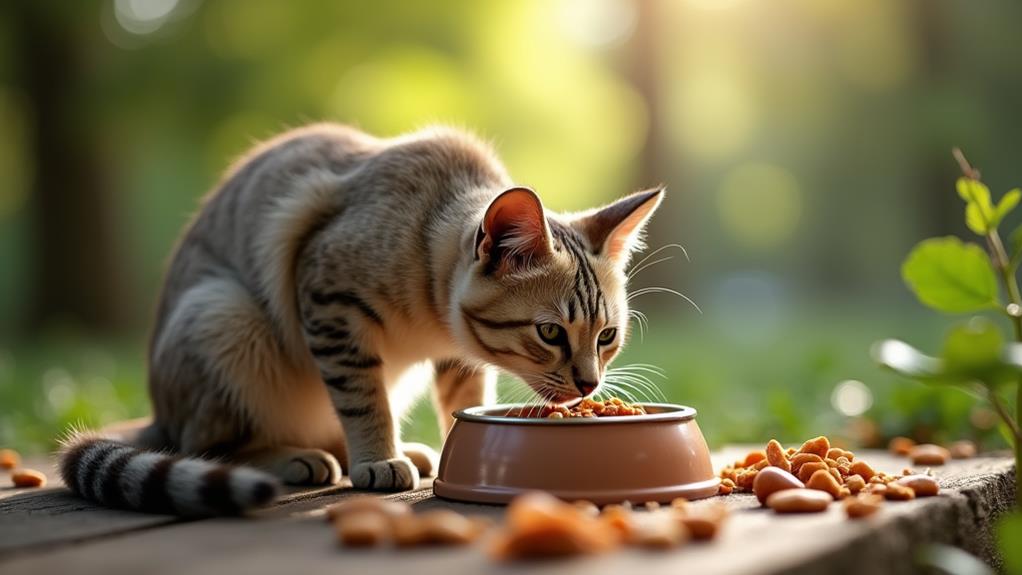
You should feed a feral cat about one cup of dry food twice a day, once in the morning and again in the early afternoon. Consistency is key, so stick to a schedule to help monitor their health and presence. Always provide clean, fresh water, and take note of any leftover food, as it may indicate overfeeding. Choose high-quality, high-protein cat food labeled as "complete and balanced." Place feeding stations in sheltered spots and clean them regularly to keep pests away. Observing these practices can guarantee their well-being and help you manage the feeding process effectively. Curious about more tips?
Assessing Feral Cat Needs
In regards to evaluating the needs of feral cats, you've got to take into account several key factors to guarantee they're well-fed and healthy. Initially, consider the feeding schedule. Feral cats thrive on consistency, so establishing a regular time helps you monitor their attendance and assess their health. You'll find that a reliable schedule reveals much about a cat population's well-being.
Next, focus on the food itself. Typically, feral cats need about 1 cup of dry food daily, but this can vary. Keep an eye on their lifespan, size, and activity level to adjust portions accordingly. Monitoring any leftover food is essential—it can indicate if they're being over or underfed.
Water is another important element. Always provide fresh water and observe their intake. Proper hydration is essential, so watch their drinking habits closely. If water levels are consistently low, it may suggest a health issue.
Recommended Feeding Practices
Establishing a consistent feeding routine is vital for maintaining the health and stability of feral cat populations. To effectively feed feral cats, aim to provide each cat with about 1 cup of dry cat food per feeding. This guarantees they receive adequate nutrition without overfeeding. Consistency is key, so set up a routine where you feed the feral cat colony twice a day, preferably in the morning and early afternoon. This schedule helps create stability within the colony and reduces the likelihood of attracting unwanted wildlife to the feeding area.
After feeding, remove any uneaten food after one hour. This practice minimizes waste and prevents pests or other animals from being drawn to the feeding area. It's vital to use high-quality cat food, as it supports the cats' overall well-being and meets their nutritional needs. Alongside food, always offer fresh water to keep the cats hydrated. Regularly check and refill the water supply to guarantee it's clean and available.
Nutritional Considerations
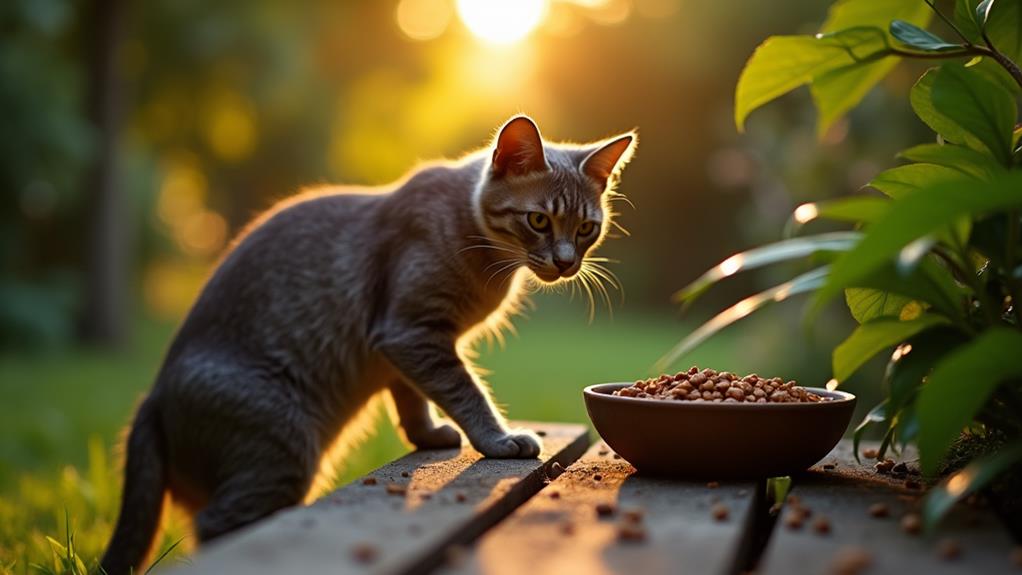
While setting a consistent feeding routine is fundamental, understanding the nutritional needs of feral cats is just as significant. Feeding a feral requires you to choose high-quality cat food formulated to provide a high-protein diet. This guarantees the cats receive the crucial nutrients they need to thrive. Look for products labeled as "complete and balanced" to confirm their diet includes all necessary nutrients without fillers that could compromise their health.
Pay close attention to portion sizes. Typically, one cup of dry food per cat per feeding is adequate. This helps you prevent obesity while making sure the cats get enough nutrition. Overfeeding can lead to health issues, so it's imperative to stick to recommended amounts.
Don't overlook hydration. Fresh water should always be available, as staying hydrated is essential for maintaining a feral cat's health. Proper hydration can prevent urinary tract issues and other potential health problems. Regularly assess the cats' health by observing changes in appetite or weight. These changes can signal underlying health issues that might need veterinary attention. By carefully considering these nutritional factors, you can support the well-being of the feral cats you care for.
Managing Feeding Stations
Creating an effective feeding station is vital for guaranteeing feral cats have a safe and consistent food supply. Start by selecting a sheltered location to protect food from harsh weather and pests. Construct your feeding station using durable materials like plastic or metal, which are easy to clean. This guarantees the area remains clean and tidy, preventing disease and making it easier to feed the cats regularly.
Use raised platforms for food bowls to keep them dry and insect-free, guaranteeing water is available nearby. Monitor the station regularly to check food intake and cat health. Adjust portion sizes so each cat gets about one cup of dry food per feeding. This not only supports their nutritional needs but also helps you gauge the health and number of cats visiting.
After feeding, remove leftover food within an hour to deter wildlife and maintain a good relationship with neighbors. This practice keeps the feeding area clean and tidy, making it a welcoming place for the cats. With these steps, you'll create a safe and efficient feeding station that supports the well-being of the feral cats in your care.
Community and Legal Aspects
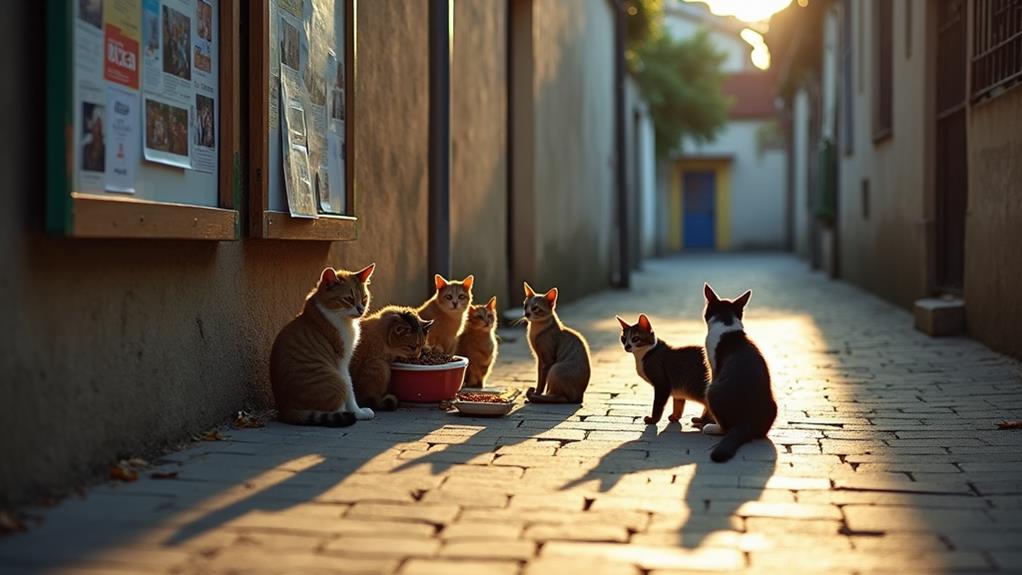
Though feeding feral cats can be a rewarding endeavor, it's important to navigate the community and legal aspects carefully. Before you start feeding feral cats, always seek permission from the property owner to prevent any legal complications. It's significant to familiarize yourself with local laws and regulations, as some areas might restrict feeding or require permits. Engaging with your neighbors about your feeding efforts can foster community support and alleviate concerns about stray cats in the area. Documenting your feeding activities and the number of cats you care for is fundamental. This documentation can be useful for both community programs and potential legal inquiries.
Here are four steps to help you handle these responsibilities with care:
- Seek Permission: Always get approval from property owners before setting up feeding stations for feral cats.
- Know the Law: Understand local laws to avoid fines or restrictions related to feeding feral cats.
- Engage the Community: Talk to neighbors to gain support and address any concerns they may have about animal welfare.
- Collaborate with Organizations: Work with local animal control or rescue groups to guarantee your efforts align with community goals for managing feral and stray cats.

